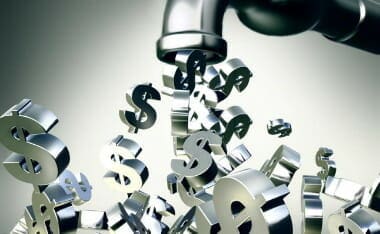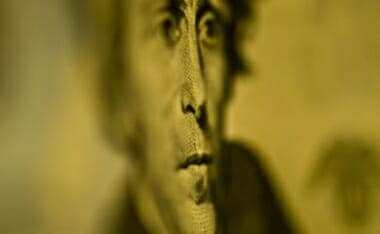(Originally posted July 2017 – updated with the below video) On this episode of Common Sense Soapbox, Florida Man leads the crew via gator to a Federal Reserve branch in Miami. Upon the marble steps, Seamus engages the crew in a brief lecture about the function — and dysfunction — of The Fed.
Question, or Statement Often Made by Democrats
- “The stock market relies on confidence, and the stock market has done incredibly well since Obama took over. How do you explain that?”
Click to Enlarge
(This is with thanks to GAY PATRIOT and the graph from ZERO HEDGE) Here is GAY PATRIOT’S summary: Fed pumping gobs of money into Wall Street? Market drifts upward. Fed stops pumping? Market doesn’t. The so-called “confidence” is drug-induced.
Credit Writedowns touches on this a bit:
…As for Bill Gross, he also said that the Federal Reserve knows that its easy money policies have a negative impact: “There are ultimately and presently negatives to these policies. The chairman recognizes that.”
[….]
On how to get out of the quantitative easing scenario that we’ve been in for so long:
“That’s very difficult, not just for the Fed, but other for other central banks. at the moment, the bank of japan is about to enter the pool, so to speak, the deep end. The Bank of England as well, perhaps, with carney indicating as much. Is it easy to get out of the deep end once you get into it? It gets difficult, because the market begins expects a constant infusion of liquidity–$85 billion a month into the bond market, which extends out into high-yield and equity credit as we move forward. Once you cut off the check writing and the purse strings, it becomes a problematic question in terms of valuation and the ability of markets, stocks, and bonds to continue on.”
On his tweet on 2/20 saying that bond vigilantes are no more and central bankers are the masters of the universe:
“They are trying to let us know that they are vigilant. We saw the minutes yesterday and they were extensive and they meet every other month or more frequently. Are they vigilant? They are in terms of their objectives. what the fed is trying to do is reflate the economy, that means not only produce 2 to 3 to 4% real growth, but a modicum of inflation in combination such so we have a nominal 5% of GDP environment. Are they vigilant in terms of moving towards that goal? Yes. Will they be vigilant in terms of having reached it then pulling back and not disrupting markets? Perhaps not. We’ll have to see going forward.”
Above video description:
When Ben Bernanke announced that the Federal Reserve’s Open Market Committee was going to continue its monetary expansion program it calls Quantitative Easing, almost everyone in the financial media was taken by complete surprise. According to the mainstream media, the non-taper “surprised almost everyone out there.” Well it did not surprise me, nor anyone who had been paying attention to what I had been saying. As I said repeatedly over the past several months, the Fed knows that the appearance of economic health would evaporate if its stimulus were withdrawn, or even diminished. The Fed understands, as the market seems not to, that the current “recovery” could not survive without the continuation of massive monetary stimulus. In fact, the Fed’s next big move will likely be to increase, rather than taper, its monthly QE dosage! One reporter on this video said that its time for the Fed to take the training wheels off the economy. As I have been saying for years, QE is not the training wheels, its the only wheels the economy has. Take it away and the economy stalls. However, as the economy is now headed toward a cliff, taking the wheels off is much better than leaving them on and going over that cliff.
For more on how I knew the Fed wouldn’t taper, here’s an op-ed I released after the decision was announced.
Listen to The Peter Schiff Show
Live Weekdays 10am to noon ET on http://www.SchiffRadio.com
Friend me on http://www.Facebook.com/PeterSchiff
Follow me on http://www.Twitter.com/PeterSchiff
- ….Until recently, the US had a coalition of allies at the G-20 to stand firm against the manipulation of the yuan. However, much to Barack Obama’s shock, they’re not as interested in scolding China for manipulating its currency while the Obama administration has done the same with its second round of “quantitative easing”….
[….]
Many currency analysts agree with Mr. Obama that the U.S. dollar stands to gain in coming months against the euro and Japanese yen, in particular, if the Fed is successful and the U.S. recovery picks up speed.
Nick Bennenbroek, analyst with Wells Fargo Securities, said the dollar actually has strengthened since the Fed’s announcement last week because, in an “ironic twist,” the economy has been showing unexpected strength. A report on Friday showed the best private job growth since April.
“Moreover, with the initial Fed announcement now out of the way, markets have refocused their attention on the ongoing European debt-market difficulties and, in particular, concerns over the state of the Irish government’s finances,” Mr. Bennenbroek said. The result is the euro may be due for a decline against the dollar.
But the Fed’s move only seemed to provide an excuse to many nations to dig in and further resist Mr. Obama’s call to curb global trade imbalances, starting with the massive Chinese trade deficit with the United States.
A Commerce Department report on Wednesday showed that the U.S. deficit with China fell $2.2 billion to $27.8 billion in September but remained near record highs. The U.S. blames the deficit in part on China’s currency policy, which makes Chinese imports cheaper in the United States.
But Chinese President Hu Jintao, ahead of a scheduled meeting with Mr. Obama on Thursday, called on other countries to “face their own problems” rather than cast blame for their giant trade imbalances on China. Mr. Hu also defended China’s currency controls as a boon to the world economy.


